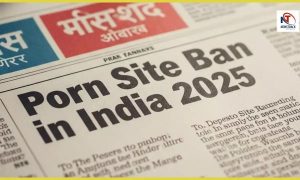The Ban and Its Intentions
India, known as the world’s third-largest consumer of online pornography, has long grappled with balancing cultural values and digital freedoms. The 2018 ban was not the first attempt to restrict access to adult content; a similar effort in 2015 was quickly reversed due to public backlash and its adverse impact on telecom operators, who reported that pornographic websites accounted for up to 70% of online traffic. The 2018 directive, however, was more targeted, focusing on 827 specific websites, including major platforms like Pornhub, Xvideos, and Xnxx, which collectively attracted billions of monthly visits from Indian users.
The ban was justified on moral and social grounds, with proponents arguing that pornography promotes unhealthy attitudes toward sex, distorts relationship expectations, and contributes to sexual violence. The Uttarakhand High Court’s order was partly influenced by a case where an accused rapist claimed pornography inspired his actions, reigniting debates about the link between explicit content and criminal behavior. The government, through the Ministry of Electronics and Information Technology (MeitY), emphasized protecting minors and preserving family-oriented values deeply rooted in Indian culture. As of 2025, additional bans targeting streaming platforms like Ullu, ALTT, and MoodX, as well as 63 more websites in 2021, reflect a continued effort to regulate “obscene” content under the Information Technology Act.

Traffic Trends: Did the Ban Work?
Contrary to its objectives, the 2018 ban did not significantly reduce overall pornography consumption in India. According to a 2019 study by SimilarWeb, a web analytics company, the combined traffic to banned and non-banned adult websites increased in the months following the ban. Between January and October 2018, 59 of the banned websites averaged 1.7 billion monthly visits. After the ban was implemented in October, visits to these sites dropped by 50% to 0.8 billion per month in November and December. However, this decline was offset by a surge in traffic to 441 non-banned adult websites, which saw visits rise from an average of 0.6 billion per month to 2 billion in the same period. Overall, the total visits to both banned and non-banned sites reached 2.8 billion in November and December 2018, surpassing the pre-ban monthly average of 2.3 billion.
Pornhub, one of the most popular adult platforms, reported that a third of its global traffic in 2018 came from India, and its visits from the country spiked after the ban, reaching over 60 million in November and December alone, the highest since March 2018. The site’s introduction of a mirror domain, website pornhub, specifically for Indian users, garnered nearly seven million visits in the two months following the ban. This suggests that rather than deterring users, the ban redirected traffic to alternative platforms and mirror sites, highlighting the resilience of demand for adult content.
The COVID-19 lockdown in 2020 further amplified this trend. With increased time spent indoors and premium content offered for free, Pornhub reported up to a 95% rise in traffic from India during the 21-day lockdown period, underscoring the ban’s limited long-term impact. The accessibility of non-banned sites and the proliferation of new platforms have made it challenging for authorities to curb consumption effectively.
Technological Workarounds and Loopholes
The ineffectiveness of the ban can be attributed to several technological and behavioral factors. First, at least 42% of the 827 banned websites (approximately 345 sites) remained accessible by simply using “https” instead of “http” in the URL, a loophole that allowed users to bypass ISP restrictions. Major platforms like Xnxx, Xvideos, and Pornhub were among those still accessible through this method, undermining the ban’s enforcement.
Second, the widespread use of Virtual Private Networks (VPNs) and proxy servers enabled users to circumvent restrictions with ease. Data from ComScore, another web analytics firm, showed a significant surge in visits to proxy services post-ban. For instance, website kproxy received 2.3 million visits from India in November 2018, more than double its average of 0.9 million in the previous three months. Similarly, hide.me saw visits triple to 0.7 million in November. Google Trends data further revealed a seven- to tenfold increase in searches for terms like “porn proxy,” “porn site proxy,” and “porn VPN” in the week the ban was announced, indicating a proactive response from users seeking to maintain access.
Browsers like UC and Opera, which offer built-in VPN features, also facilitated circumvention, allowing users to access blocked content without significant technical expertise. As Aditya Gautam, author of Pornistan: How to Survive the Porn Epidemic in India, noted, “It’s not possible to ban anything on the internet. It’s futile. China banned 20,000 porn websites last year, but people there still consume porn in different ways.” The constant emergence of new websites further complicates enforcement, with experts estimating that over 100,000 adult sites are active globally, far exceeding the scope of India’s banned list.
Cultural and Legal Implications
The ban’s failure to reduce consumption has sparked broader debates about its cultural and legal ramifications. Proponents argue that restricting access aligns with India’s conservative values, which prioritize family-oriented norms and respect in relationships. They contend that pornography, particularly content depicting violence or unrealistic portrayals of intimacy, can foster harmful attitudes and contribute to issues like sexual violence. Dr. Harish Shetty, a Mumbai-based psychiatrist, has warned that excessive pornography consumption can distort perceptions of sexuality, promote compulsive behavior, and, in extreme cases, exacerbate psychopathic tendencies.

However, critics argue that the ban infringes on personal freedoms and fails to address root causes like the lack of comprehensive sex education. In a society where discussions about sex remain taboo, pornography often serves as a primary source of sexual knowledge, particularly for young men. Dr. Jacqueline Bhabha, a researcher on violence against women, notes that the absence of open conversations about sexual health and consent drives reliance on potentially misleading content. The ban’s focus on restriction rather than education has been criticized as a superficial solution that ignores deeper societal issues.
Legally, India’s stance on pornography is complex. While private viewing is not illegal, the production, distribution, and public exhibition of explicit content are prohibited under the Information Technology Act and sections of the Indian Penal Code. Penalties include up to three years’ imprisonment and fines for obscene material, with stricter provisions for child pornography. Yet, enforcement remains inconsistent, with conviction rates for pornography-related cases in the single digits, according to cybercrime lawyer Prashant Mali. The rise of homemade pornography, particularly in rural areas, further complicates regulation, as couples upload content to unregulated platforms, creating an “underground porn industry” that operates beyond government reach.
Challenges and Future Directions
The ban’s limited success highlights the challenges of regulating the internet in a country with over 800 million online users as of 2025. The global nature of digital content, hosted on servers outside India’s jurisdiction, renders domestic laws less effective. Encrypted apps like Telegram and peer-to-peer sharing platforms further evade content filters, making comprehensive bans nearly impossible.
Experts suggest that rather than relying solely on bans, India should invest in digital literacy and sex education to address the root causes of problematic consumption. Initiatives like the Ministry of Women and Child Development’s collaboration with non-profits to introduce sex education in schools face resistance from conservative groups but are seen as critical for fostering healthy attitudes toward sexuality. Additionally, improving age-verification systems on adult websites and enhancing cybercrime enforcement could complement regulatory efforts without infringing on personal freedoms.
India’s 2018 porn ban, intended to curb access to explicit content and protect societal values, has instead highlighted the resilience of digital consumption patterns. Far from reducing traffic to adult websites, the ban has driven users to non-banned platforms, mirror sites, and technological workarounds like VPNs and proxy servers. Data from SimilarWeb and ComScore, coupled with Pornhub’s traffic spikes, indicate that overall consumption has increased, with India remaining a global leader in pornography viewership. As the country navigates its digital revolution, balancing cultural sensitivities with individual freedoms will require a nuanced approach that prioritizes education and effective enforcement over blanket bans. Until then, India’s cat-and-mouse game with online pornography is likely to continue, with users consistently finding ways to access the content they seek.





